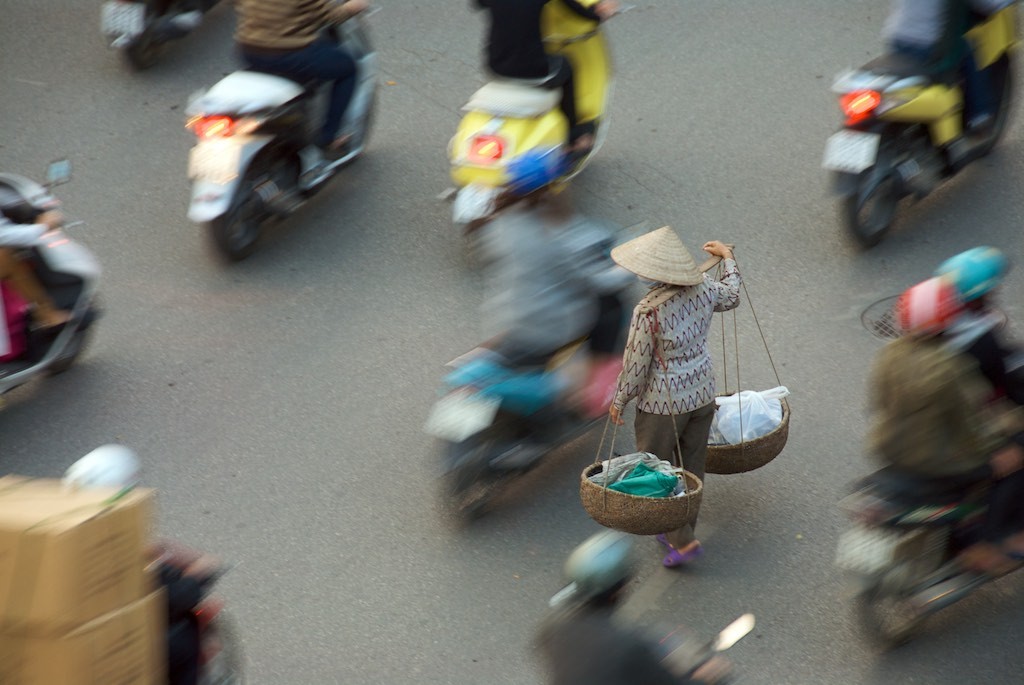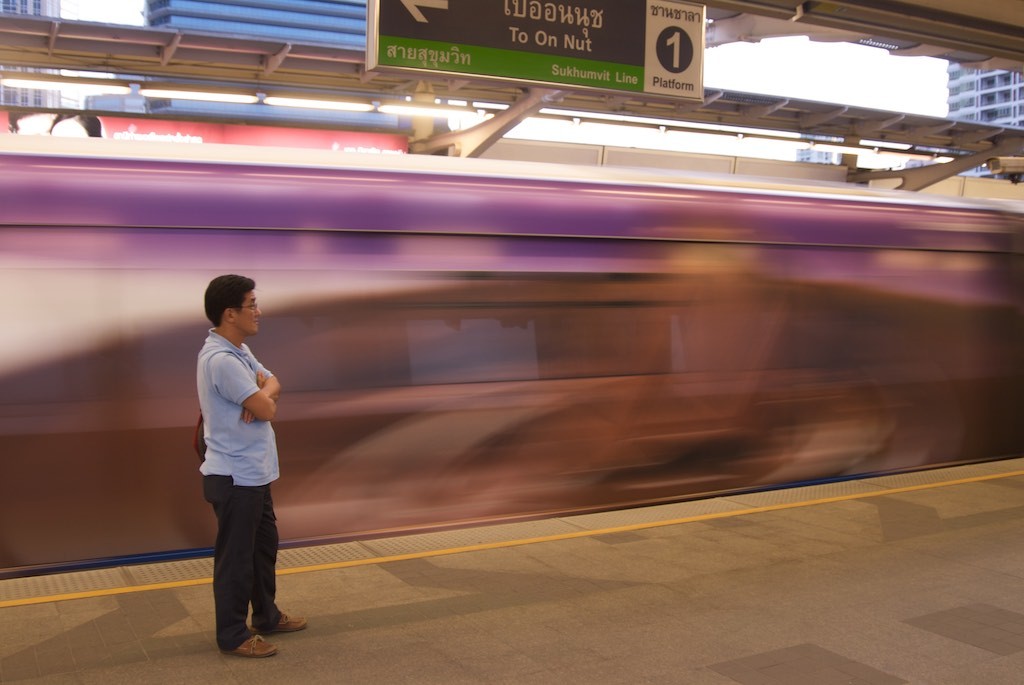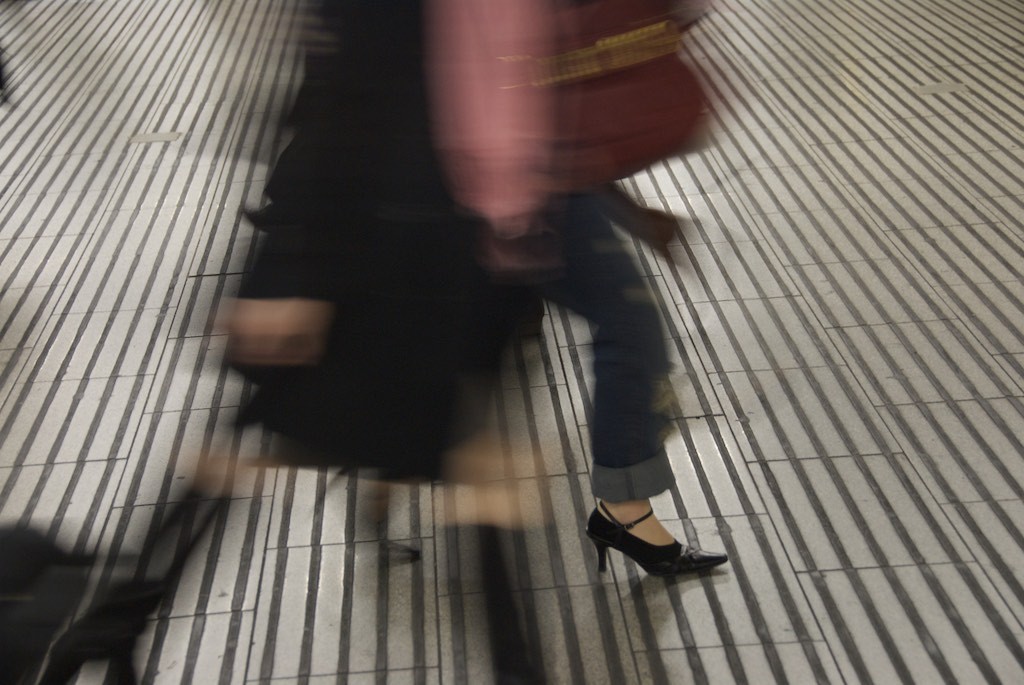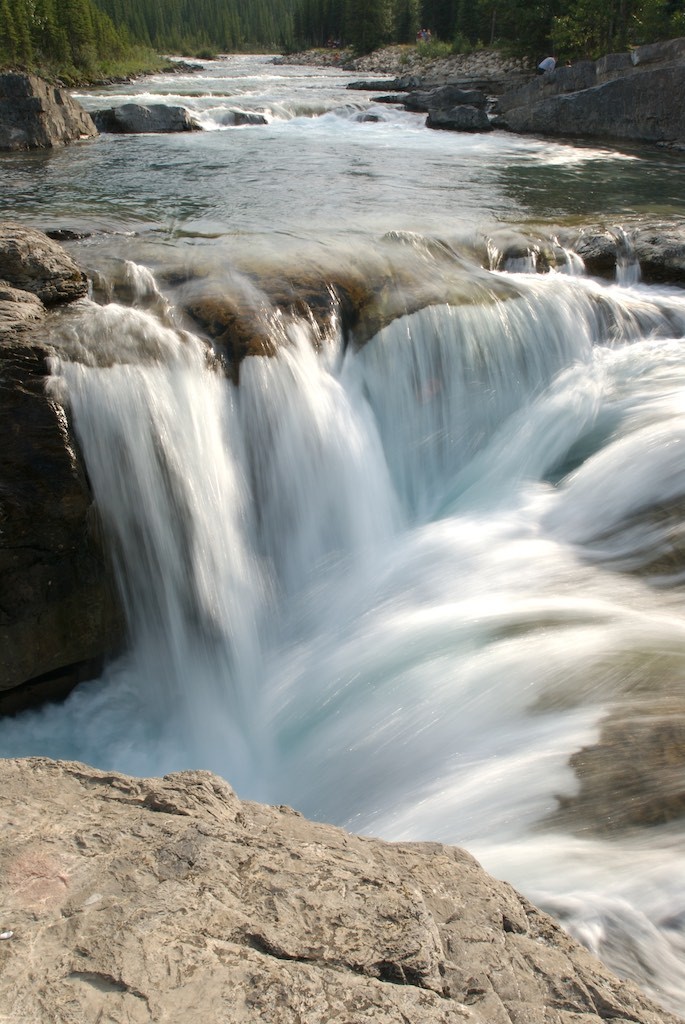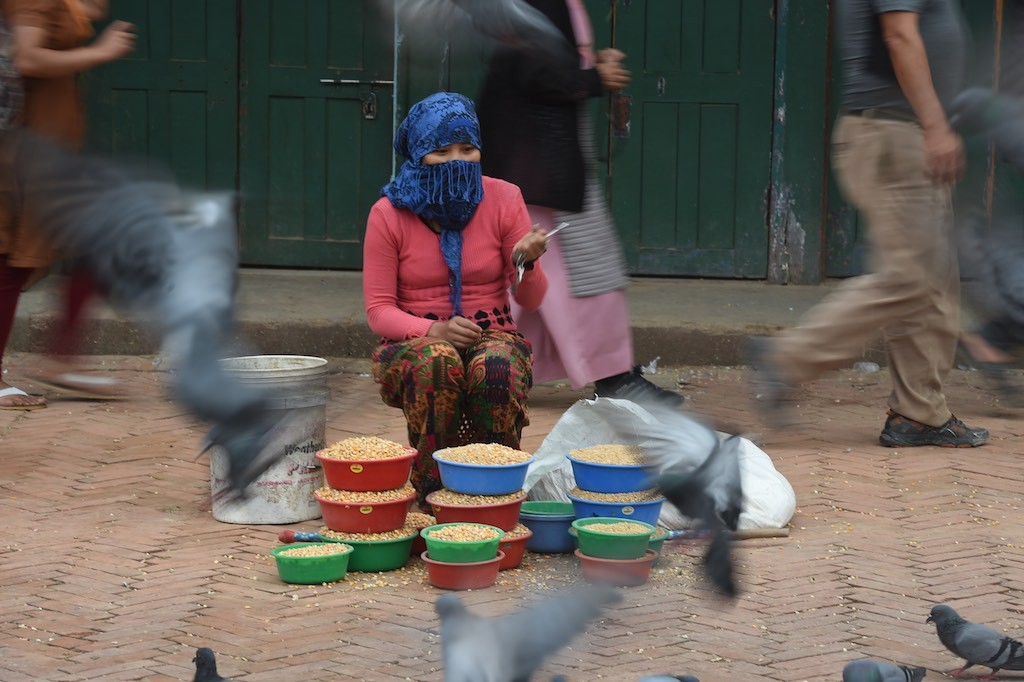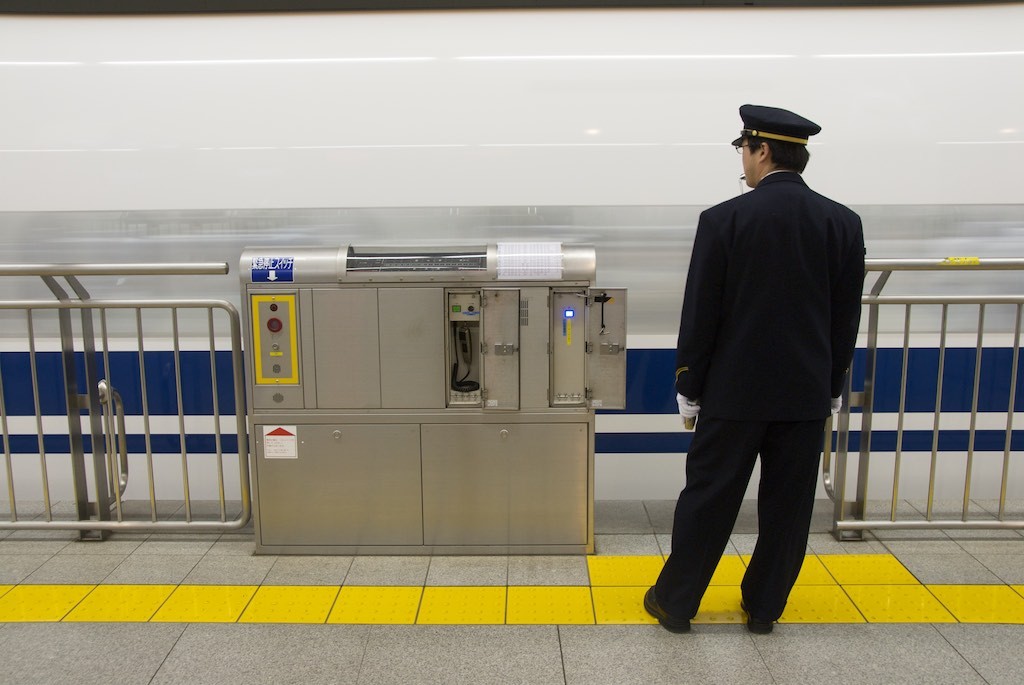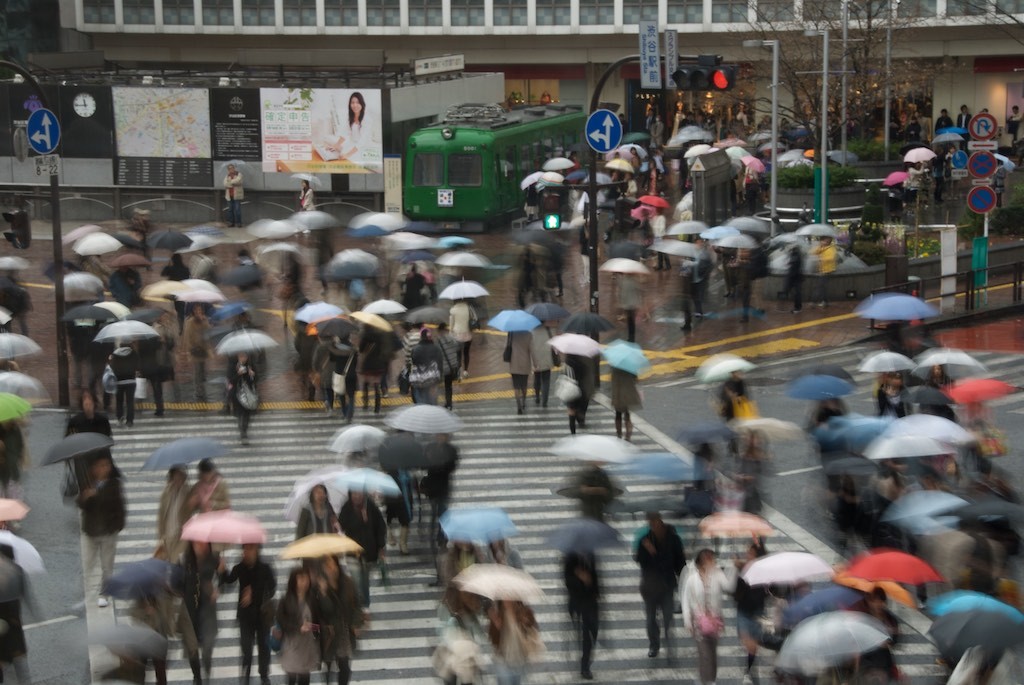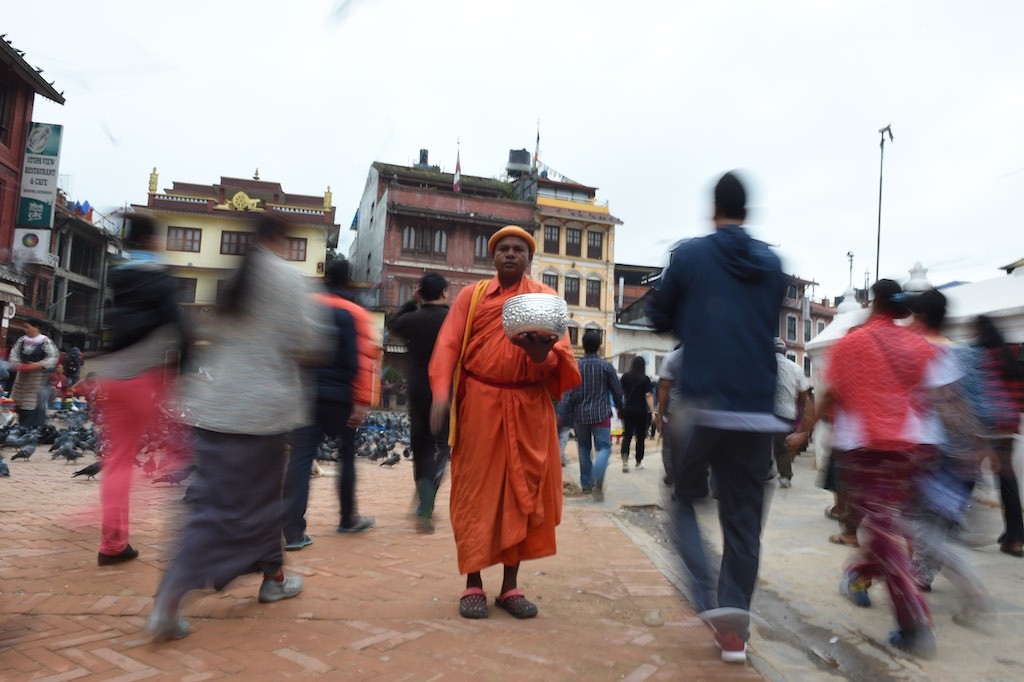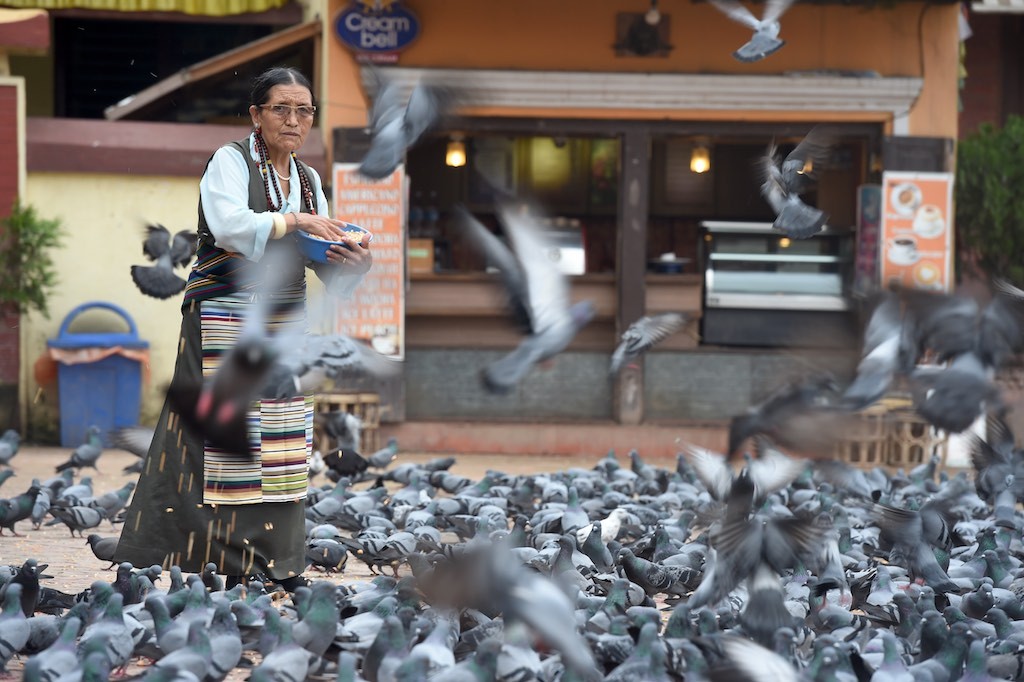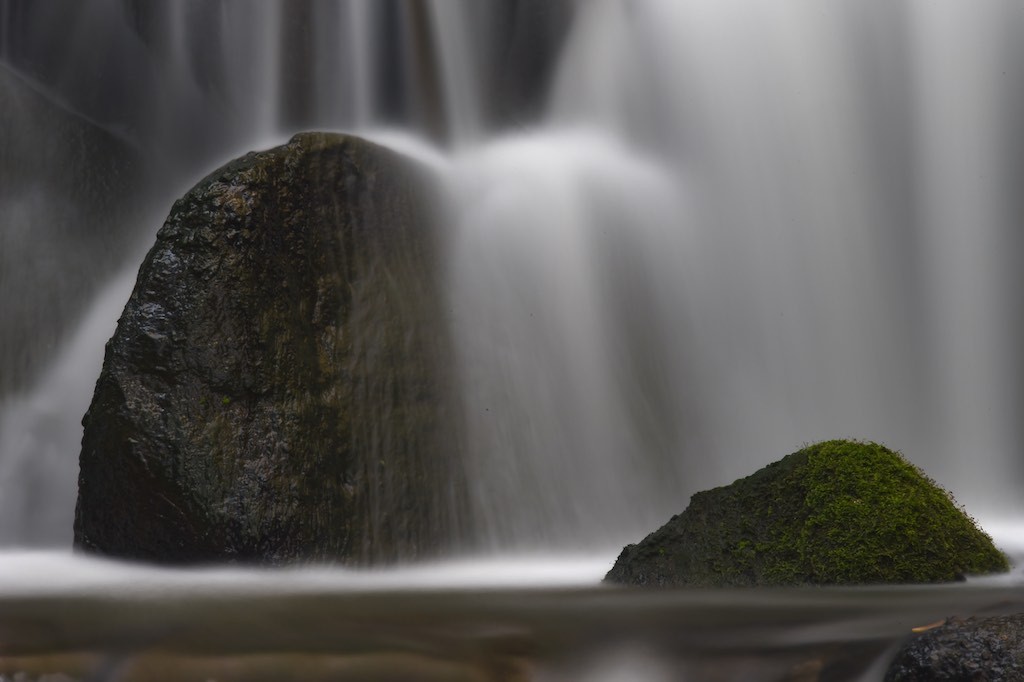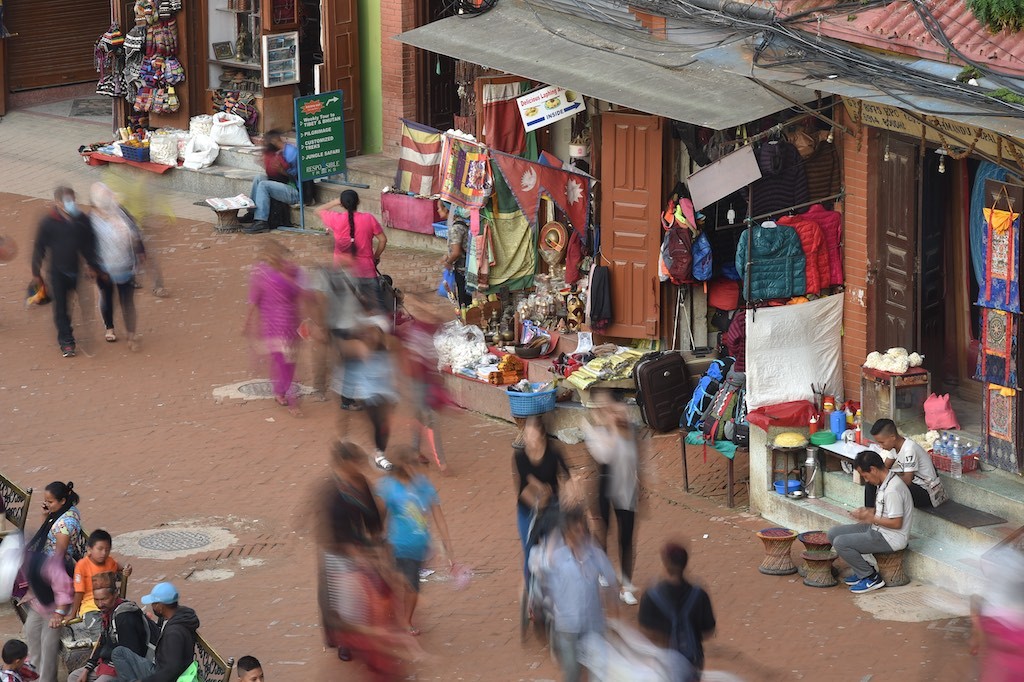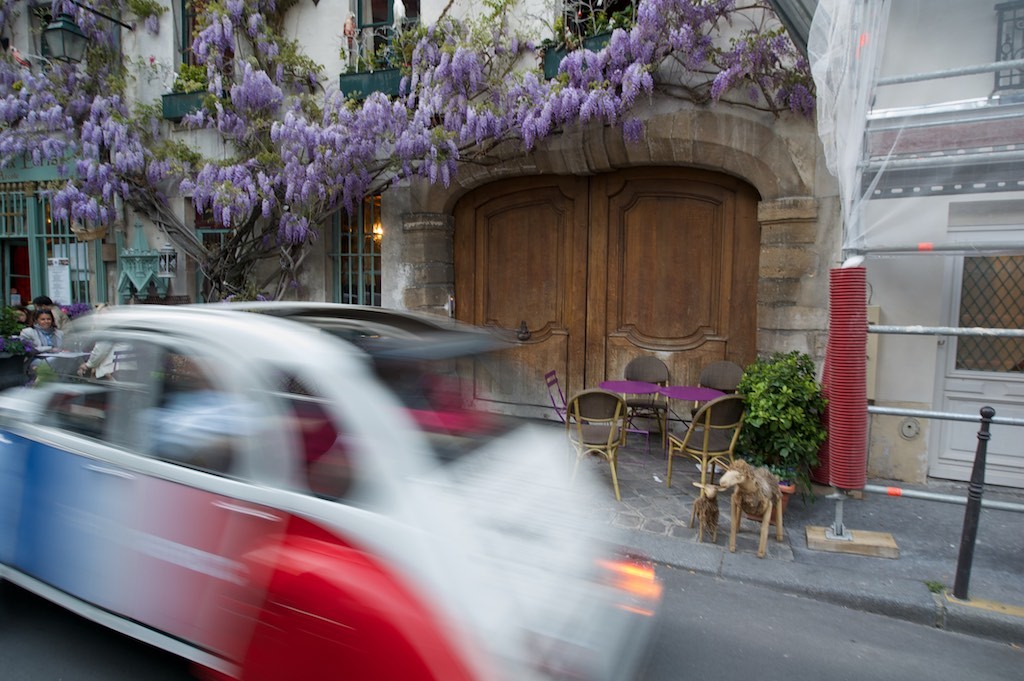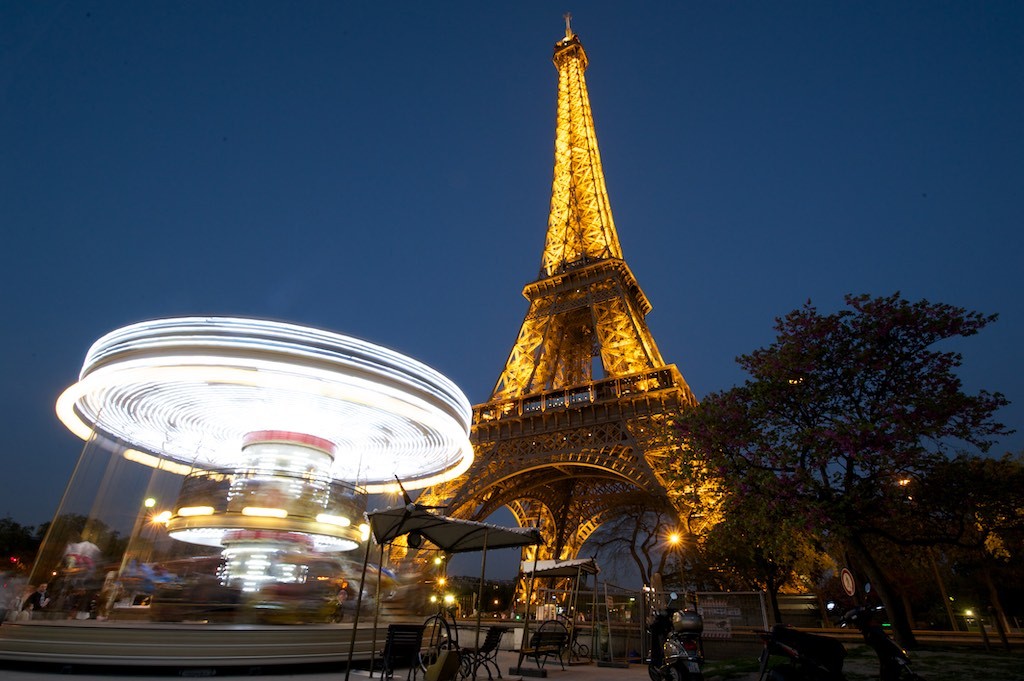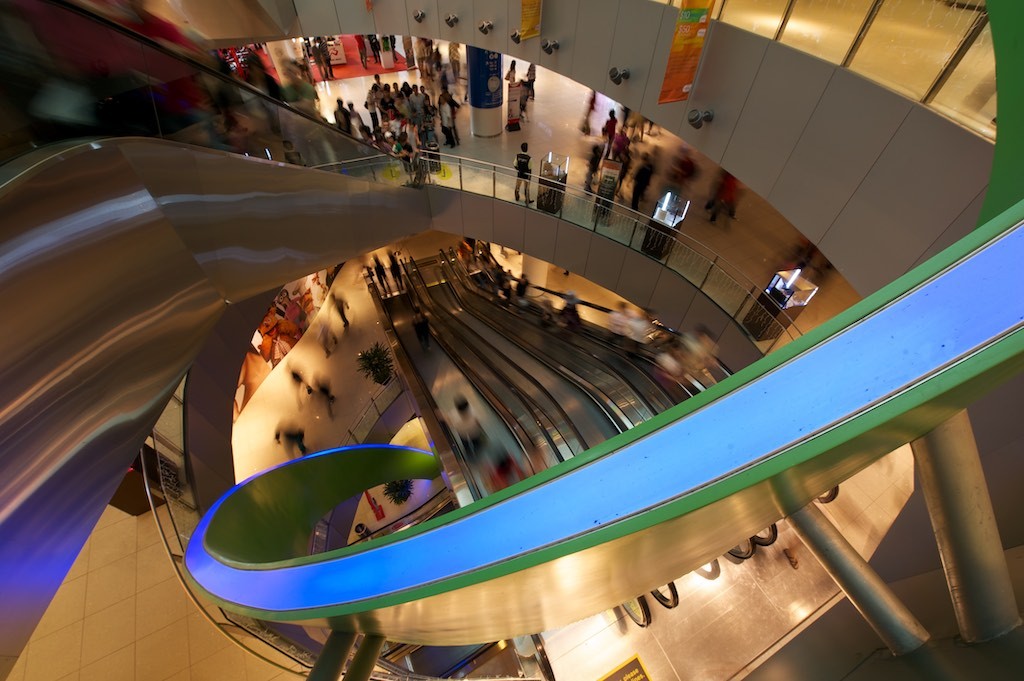We are used to seeing photos that freeze a thousandth of a second in time. But long exposures do something magical. They do something different that our eyes can’t. They freeze that movement over a period of time in a beautiful blur in one frame.

The 1 second long exposure for this image did something that our eyes can’t do: capture movement of the small waterfall as beautiful lines.
In my post from two weeks ago, I shared how I captured movement by panning with my subject as it moved through the frame. If you haven’t read that post, I would recommend starting there.
This time we will use a lot of the same concepts but create a different type of image.
Another way that you can capture movement is to allow your subject to move through the frame but don’t pan with the subject. You just need to stay still as they move through the frame. This time your background will be sharp and whatever is moving will be blurry.

The camera set-up for the shot is the same to what you did for panning. Start with a shutter speed of around 1/15 of a second. You can use shutter priority mode just make sure that you adjust your ISO so that you have a usable aperture.
This time the object(s) moving through your frame will be blurred and your background will be sharp. So the background is important. You may find a building or a something that you like that has people or vehicles which are moving through the frame. The background becomes more prominent in the image while the moving subjects compliment that background.
This is the same technique you would use to capture images of trails of car lights or the moving water of waterfalls. In these cases, you will need to use longer exposures. Depending on the amount of light in the scene, your exposures can stretch into seconds.

This image of car headlights and taillights was captured using an 18 second exposure.
Because you are working with slow shutter speeds, a tripod is an extremely useful piece of equipment in keeping your camera steady and your image sharp. However, I have also rested my camera on a solid surface and been able to get sharp results.
When panning, it was important to have images that went across the frame. However, when you are not moving, the movement in the scene can be any type and in any direction. Because you want slow shutter speeds this is a great workshop for an overcast day or even for inside. A train station would be a great place to start.

The movement of the train is captured using a shutter speed of 1/6 of a second.
Like our panning workshop, it is best to use a wide angle lens when handholding because it is it easier to shoot at slower shutter speeds with a wide angle. Telephoto lenses can be used but it is best to put them on a tripod.

I used a 70-200mm telephoto lens to compress the perspective of the image. As the shutter speed was 1/8th of a second, I put the camera on a tripod which enabled me to keep the woman in the foreground sharp.
When starting out I would definitely recommend using a tripod and setting up with a wide angle lens. Start by setting your camera to 1/15 of a second. After you have captured some images I would try to experiment with longer shutter speeds. You may have to lower your ISO to its lowest setting to get longer shutter speeds.
What you need:
A wide angle lens is easiest to use when you start out.
A tripod makes this type of image much easier to capture but it is not always essential if you can brace yourself against a solid object.
A place where there is a consistent flow of moving subjects, like traffic or people walking.
Remember (Your focus):
Start with 1/15 of a second and work from there – this is a great time to be checking your camera’s display screen for your results.
The background is very important as it is what will be in focus and not blurred. Find a background that compliments your subject.
Do not pan but allow your subject to move through the frame.
When using a telephoto lens to zoom in on the subject, the movement of the subject is more pronounced than with a wide angle lens.
A tripod will give you many more options of longer shutter speeds, including the lights of cars moving through a scene.
Remember to use good composition.
Thanks for all your support. As an Amazon Associate I earn from qualifying purchases.
